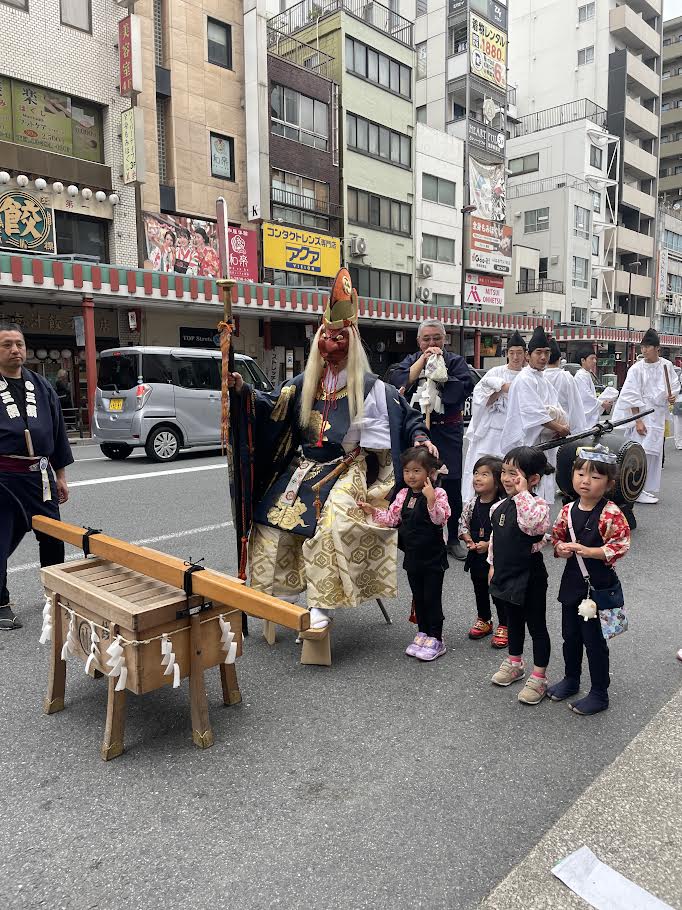Experiencing one of Tokyo's biggest religious festivals
The Sanja Matsuri is one of the three largest Shinto celebrations, and the biggest of them all
At A Glance
- As I made my way home, I reflected on the similarities between the Sanja Matsuri and the fiestas back in the Philippines. Both are vibrant expressions of community spirit, filled with music, food, and a shared sense of joy.

If the Philippines has fiestas, then Japan has matsuris. Despite the difference in religion, both events held in various neighborhoods in their respective countries are colorful and full of character. Last week, Tokyo had one of its biggest festivals. While it runs for three days, the main event I wanted to see was happening at eight in the morning on a Sunday. Making the trek to Asakusa from where we live on an early weekend morning usually doesn’t sound like a fun activity, but I was willing to make an exception for this one. The Sanja Matsuri is one of the three largest Shinto festivals held in Tokyo and one of the biggest in all of Japan.
Like many Japanese festivals, Sanja Matsuri is a religious celebration. It uniquely blends Shinto and Buddhist traditions. This cross-faith festival is dedicated to the kami (spirits) of three men who founded Senso-ji, Tokyo’s oldest temple. The origins of the Sanja Matsuri date back to an early morning in March 628. Two fishermen brothers, Hinokuma Hamanari and Hinokuma Takenari, found a statuette of the Bodhisattva Kannon in their fishing net. They were approached by a wealthy landlord named Hajino Nakatomo, who converted them to Buddhism. The three men then devoted their lives to the Buddhist faith and consecrated the statue in a small temple, which eventually became Senso-ji Temple.
The festival’s current form was established during the Edo period when shōgun Tokugawa Iemitsu commissioned the construction of Asakusa Shrine in 1649. This shrine, dedicated to the three kami, solidified the festival’s importance and structure. Fast forward to today, the Sanja Matsuri is a vibrant celebration held every third weekend of May and transforms Asakusa into a lively hub of activity, drawing locals and tourists alike.
Sunday’s main event—and the one I willingly woke up at six in the morning for, along with the promise of possible sightings of locals showing off their traditional tattoos—was the procession of the three Asakusa Shrine-owned mikoshi. These elaborately decorated portable shrines, made of black lacquered wood and adorned with gold sculptures and gold leaf, act as miniature, portable versions of Asakusa Shrine. Each mikoshi weighs approximately one ton and requires around 40 people to carry, with about 500 participants involved throughout the day.

As the mikoshi are carried through the streets, they are vigorously shaken and bounced, a practice believed to intensify the power of the kami and bestow good luck upon the neighborhoods. It was energetic but still quite an organized parade. I was warned that it might get chaotic in Asakusa during this particular event, but as someone who has covered the Traslacion for the Black Nazarene at Quiapo, I’d say that, as a spectator, the Sanja Matsuri will not even make you break a sweat. I can’t say the same for the people carrying the mikoshi, though.
It is, indeed, a sight to behold, with the carriers calling out and jolting the shrines, creating a dynamic and festive atmosphere.
The festival’s history and religious significance add depth to the lively celebrations. Each year, on the Thursday before the public festivities begin, Asakusa Shrine’s head priest performs a ritual to transfer the enshrined kami to the three mikoshi. This ceremony ensures that the spirits will reside in the portable shrines for the duration of the festival. The public festivities kick off on Friday with the Daigyoretsu, a grand procession featuring participants in lavish Edo-period costumes, musicians, and performers parading through Asakusa’s streets.
Saturday sees approximately 100 smaller mikoshi from various Asakusa districts gathering at Kaminarimon and making their way to Asakusa Shrine for a blessing ceremony. After the ceremony, these mikoshi are paraded through their respective neighborhoods, spreading good fortune and blessings. Throughout the festival, the streets of Asakusa are filled with food stalls, offering an array of Japanese street food, and festival games, adding to the lively atmosphere. The sounds of traditional drums and flutes, along with the sight of people in traditional attire, create an immersive experience that transports you to a different era.
I left Asakusa at around 10 in the morning, the perfect time to avoid the hordes of tourists set to add to the crowds. As I made my way home, I reflected on the similarities between the Sanja Matsuri and the fiestas back in the Philippines. Both are vibrant expressions of community spirit, filled with music, food, and a shared sense of joy. Whether in Tokyo or Manila, these festivals bring people together, creating bonds that transcend cultural and religious differences and the Sanja Matsuri is an enduring symbol of the power of tradition and community.